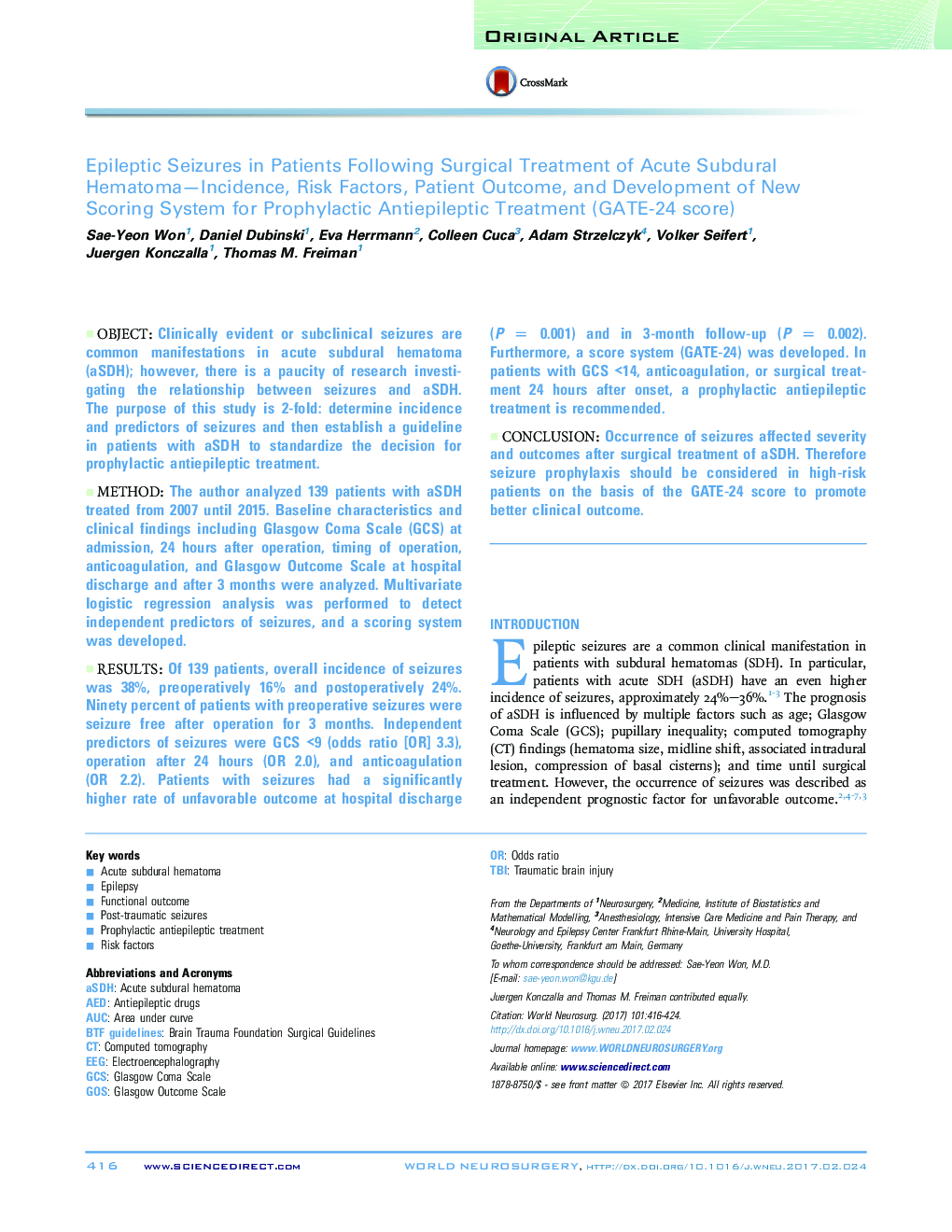| Article ID | Journal | Published Year | Pages | File Type |
|---|---|---|---|---|
| 5634123 | World Neurosurgery | 2017 | 9 Pages |
ObjectClinically evident or subclinical seizures are common manifestations in acute subdural hematoma (aSDH); however, there is a paucity of research investigating the relationship between seizures and aSDH. The purpose of this study is 2-fold: determine incidence and predictors of seizures and then establish a guideline in patients with aSDH to standardize the decision for prophylactic antiepileptic treatment.MethodThe author analyzed 139 patients with aSDH treated from 2007 until 2015. Baseline characteristics and clinical findings including Glasgow Coma Scale (GCS) at admission, 24 hours after operation, timing of operation, anticoagulation, and Glasgow Outcome Scale at hospital discharge and after 3 months were analyzed. Multivariate logistic regression analysis was performed to detect independent predictors of seizures, and a scoring system was developed.ResultsOf 139 patients, overall incidence of seizures was 38%, preoperatively 16% and postoperatively 24%. Ninety percent of patients with preoperative seizures were seizure free after operation for 3 months. Independent predictors of seizures were GCS <9 (odds ratio [OR] 3.3), operation after 24 hours (OR 2.0), and anticoagulation (OR 2.2). Patients with seizures had a significantly higher rate of unfavorable outcome at hospital discharge (P = 0.001) and in 3-month follow-up (P = 0.002). Furthermore, a score system (GATE-24) was developed. In patients with GCS <14, anticoagulation, or surgical treatment 24 hours after onset, a prophylactic antiepileptic treatment is recommended.ConclusionOccurrence of seizures affected severity and outcomes after surgical treatment of aSDH. Therefore seizure prophylaxis should be considered in high-risk patients on the basis of the GATE-24 score to promote better clinical outcome.
